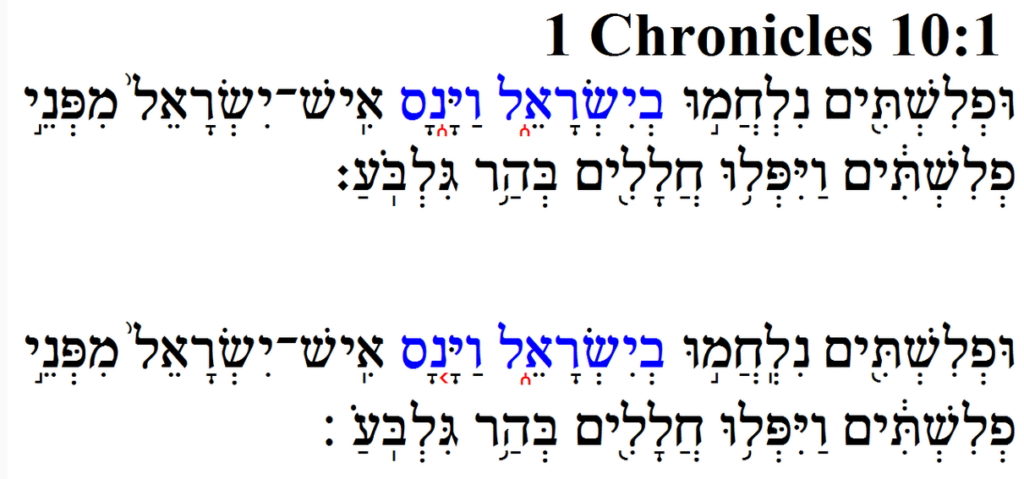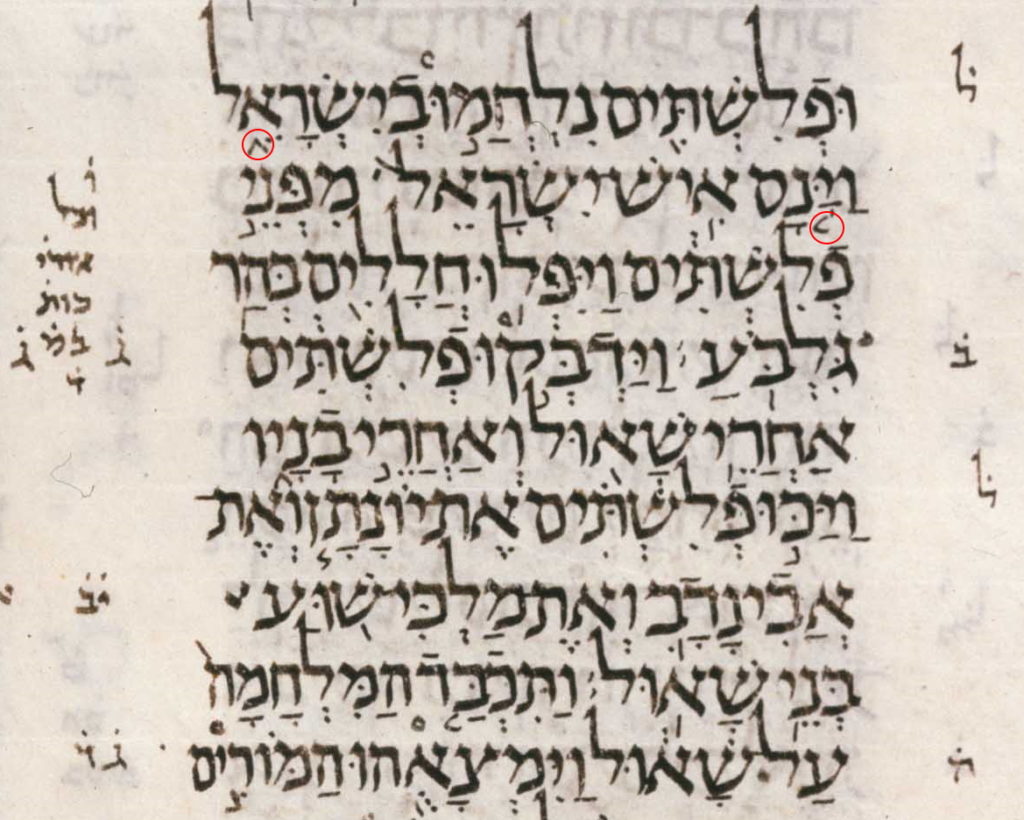What is Textual Criticism?
Textual criticism is a branch of textual scholarship, philology, and of literary criticism that is concerned with the identification of textual variants, or different versions, of either manuscripts or of printed books…The objective of the textual critic’s work is to provide a better understanding of the creation and historical transmission of the text and its variants.
https://en.wikipedia.org/wiki/Textual_criticism
What does Textual Criticism look like in real life? Or, what is a simple example of Textual Criticism?
If you happen to have two or more editions of the Hebrew Bible (Tanakh) take a look at 1 Chronicles 10:1. How does it read? Do you find two consecutive Ethnachta accents as in the first example below or do you see an Ethnachta אֶתְנַחְתָּא followed by a mehuppach מְהֻפָּ֤ךְ as in the second example (the accents are in red)?

Here are 11 common printed editions of the Hebrew Bible worth checking out:
- Letteris Hebrew Bible / OT (London 1852) pg. 1290
- Ginsburg Hebrew Bible/OT (London 1894 /1998 ) pg. 1698
- Snaith Hebrew Bible/OT (London 1958) pg. 1274
- KorenTanakh ( Jerusalem 1966)
- Biblia Hebraica Kittel (1937)
- The Biblia Hebraica Stuttgartensia (Deutsche Bibelgesellschaft, Stuttgart 1982)
- Breuer Tanach ( Jerusalem 1989)
- Art Scroll Tanach (Brooklyn 1996) pg. 1898
- Aron Doton, Biblia Hebraica Leningradensia (Peabody, Massachusetts 2001) pg. 1146
- JPS Hebrew-English Tanakh 2nd edition ( Philadelphia 2004 ) pg. 1911
- Jerusalem Crown (Jerusalem 2004) pg. 8
A check of the above eleven editions reveals that three of the above-mentioned text have the repetitive Ethnachta in 1 Chronicles 10:1. Namely, The Biblia Hebraica Stuttgartensia (BHS), Hendrickson Publishers Biblia Hebraica Leningradensia (BHL) edited by Aron Doton, and the Jewish publication Societies Hebrew-English Tanakh 2nd edition. Because both three above additions (BHS, BHL, and the JPS) are based on the Leningrad Codex if one has access to a facsimile of Leningrad Codex or to digital images of the Codex one should check it out to see if the BHS, BHL, and JPS actually reflect its reading at this point.

Surprisingly a quick check of the image of the Leningrad Codex reveals that the 3 editions mentioned above actually have departed from the reading found in the Leningrad Codex! This means that the alternative reading found in some printed Hebrew Bibles is probably not a true textual variant found in the Leningrad Codex but rather is a modern typo or error that seems to have been introduced when the BHS was being prepared. The BHK the edition before the BHS reads with an Ethnachta אֶתְנַחְתָּא followed by a mehuppach מְהֻפָּ֤ךְ

Okay, this very brief example of a very simple issue demonstrates in part what Textual Criticism is.